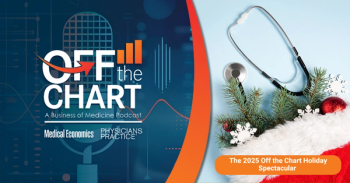
National rate of uninsured people hits record low 8%, HHS says
More people getting health coverage, but 26.4 million still don’t have it.
The national rate of people without health insurance dropped to a record low 8% in the first quarter of 2022, according to federal researchers.
A
The figures were in an analysis published Aug. 2 by the Office of Health Policy in the
“Overall, these results highlight the significant gains in health insurance coverage that occurred in 2021 and early 2022 associated with the Biden-Harris Administration’s policies to support health insurance expansion,” the report said. “These gains build on the large reductions in the uninsured rate that occurred after the implementation of the Affordable Care Act (ACA) in 2014, which research demonstrates produced improved health outcomes, better access to care, and improved financial security for families.”
Before 2022, the previous record low uninsured rate was 9% in 2016, for the annual rate. The lowest quarterly estimate was 8.6% in the first quarter of 2016, though the report noted quarterly estimates are more volatile due to smaller sample sizes.
The Marketplace
About 5.4% of adults aged 18 to 64 years reported having ACA Marketplace coverage in early 2022, up about 2 million people from the 4.4% Marketplace coverage rate of 2020.
The American Rescue Plan,the administration’s response to the economic woes caused by the COVID-19 pandemic, included enhanced subsidies for people seeking insurance through the Marketplace at HealthCare.gov. The subsidies were retroactive to the start of 2021, boosted the size of premium tax credits for people with incomes between 100% and 400% of the federal poverty level (FPL), and extended tax credits to those with incomes above 400% of the FPL for the first time, the report said.
The Inflation Reduction Act, introduced in the Senate, would extend ACA Marketplace insurance subsidies through 2025.
“And I'm hopeful that with Congressional action we can continue the work to lower costs for more Americans by both extending the enhanced Affordable Care Act tax credits that have helped drive the uninsured rate to an all-time low and increasing the affordability of prescription drugs for Medicare beneficiaries – reducing their cost sharing and allowing Medicare to negotiate a better deal on prescription drug prices,” HHS Secretary Xavier Becerra said in a statement.
Without an extension, there have been predictions that millions of people will face
Medicaid expansion
Additional factors for the declining uninsured rate included the continuous enrollment provision in Medicaid for adults aged 19 to 64 with incomes less than 138% of the FPL.
Five states expanded Medicaid for adults in 2019 and 2020. From 2018 to 2020, the most recent year data are available, those states had the largest decreases in uninsured rates: Idaho (-8.4%), Virginia (-7.2%), Maine (-4.9%), Nebraska (-2.8%), and Utah (-1.4%).
Two states that expanded Medicaid in 2021 posted increases in the rates of uninsured: Missouri (1.7%) and Oklahoma (2.9%). The report did not explain why.
Among the 50 states and the District of Columbia, only four – Washington D.C., Massachusetts, Rhode Island and Vermont – had single digit uninsured rates for those who qualify for Medicaid.
HHS touted
Newsletter
Stay informed and empowered with Medical Economics enewsletter, delivering expert insights, financial strategies, practice management tips and technology trends — tailored for today’s physicians.








